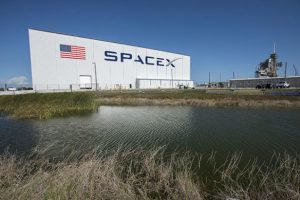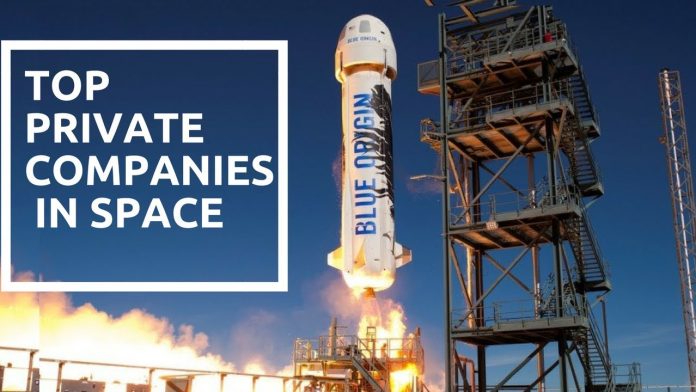Introduction
Once a realm reserved solely for astronauts and government agencies, space travel is rapidly transforming into a commercial venture, thanks to private companies pioneering new technologies. Space tourism—once the subject of science fiction—is now a reality. Billionaires are launching rockets, civilians are orbiting Earth, and the space industry is opening its doors to paying customers.
This revolution is not driven by governments like NASA or Roscosmos alone, but by a new breed of tech-savvy private companies such as SpaceX, Blue Origin, Virgin Galactic, and Axiom Space. These companies are not just launching rockets; they are engineering the infrastructure, vehicles, and ecosystems that could make space tourism a multi-billion-dollar industry.
In this article, we’ll explore how cutting-edge technology and entrepreneurial vision are shaping the future of space travel. From reusable rockets and space hotels to orbital experiences and lunar missions, we’ll examine how private companies are making space tourism real—and what that means for humanity.
1. The Evolution of Space Travel: From Government to Private Sector
Space travel has traditionally been under the domain of government agencies. The Soviet Union’s Yuri Gagarin became the first human in space in 1961, followed by NASA’s monumental Apollo missions that culminated in the moon landing of 1969. These were incredible achievements, but also incredibly expensive and state-funded.
Fast forward to the 21st century, and the paradigm has shifted. After the retirement of NASA’s Space Shuttle program in 2011, the agency began partnering with private companies through initiatives like the Commercial Crew Program, aimed at fostering private innovation in spaceflight.
This public-private partnership laid the groundwork for private firms to not only support government missions but to develop their own space tourism initiatives. The entry of billionaires like Elon Musk, Jeff Bezos, and Richard Branson—backed by deep pockets and ambitious visions—accelerated this transformation.

2. SpaceX: Engineering Reusability and Deep Space Tourism
Founded in 2002 by Elon Musk, SpaceX is at the forefront of private spaceflight innovation. The company’s core mission is to make space travel affordable and sustainable, eventually enabling human colonization of Mars.
Key Technologies Driving SpaceX’s Space Tourism Vision
-
Falcon 9 and Falcon Heavy: These reusable rockets drastically reduce the cost of space travel. The ability to land boosters and reuse them is a game-changer.
-
Dragon Capsule: Originally developed to ferry cargo and astronauts to the International Space Station (ISS), it’s now being adapted for private missions.
-
Starship: SpaceX’s fully reusable spacecraft is designed for interplanetary travel. It can carry up to 100 passengers, making it a potential vehicle for commercial space tourism.
Notable Missions
-
Inspiration4 (2021): The first all-civilian orbital mission. Four civilians orbited Earth for three days, proving that trained astronauts aren’t the only ones who can survive and thrive in space.
-
Dear Moon Project: Funded by Japanese billionaire Yusaku Maezawa, this mission aims to fly civilians around the Moon aboard Starship, tentatively scheduled for the late 2020s.
3. Blue Origin: Suborbital Space Tourism with New Shepard
Founded by Amazon’s Jeff Bezos in 2000, Blue Origin focuses on both orbital and suborbital spaceflight. Its motto, “Gradatim Ferociter” (Step by Step, Ferociously), reflects its steady progress toward making space accessible.
Key Innovations
-
New Shepard Rocket: Designed specifically for space tourism, this suborbital vehicle takes passengers above the Kármán line (the recognized boundary of space) for a few minutes of weightlessness and panoramic Earth views.
-
Reusable Architecture: Like SpaceX, Blue Origin uses reusable rockets to lower costs and improve launch frequency.
Historic Moments
-
In July 2021, Jeff Bezos himself flew on a New Shepard mission alongside his brother, a Dutch teenager, and 82-year-old aviation pioneer Wally Funk—showcasing the inclusivity of space tourism.
-
The company has since conducted multiple flights with paying customers, celebrities, and researchers, solidifying its role in the space tourism landscape.
4. Virgin Galactic: Space Tourism with Style
British entrepreneur Richard Branson’s Virgin Galactic has taken a different approach. Instead of vertical rocket launches, the company uses spaceplanes that take off like traditional aircraft, ascend to suborbital space, and glide back to Earth.
Technology: SpaceShipTwo
-
Launched from a mothership (WhiteKnightTwo), SpaceShipTwo reaches altitudes over 80 km, giving passengers several minutes of weightlessness.
-
The design focuses on comfort and safety, appealing to affluent tourists seeking a premium space experience.
Commercial Launches
-
In July 2021, Branson became one of the first people to fly to space aboard his company’s vehicle, beating Bezos by nine days in the so-called “billionaire space race.”
-
Virgin Galactic began offering commercial spaceflights in 2023, with ticket prices reportedly around $450,000 per seat.
5. Axiom Space and Space Hotels: Living in Orbit
Axiom Space, a Texas-based company founded by former NASA executives, has set its sights on building the first commercial space station.
Key Projects
-
Axiom Station: Initially attaching modules to the existing ISS, Axiom plans to eventually separate and operate a standalone commercial station. This could host researchers, astronauts, and yes—space tourists.
-
Private Astronaut Missions (Ax Missions): Axiom has partnered with SpaceX to send paying customers to the ISS. The Ax-1 mission in 2022 included three private astronauts and a former NASA astronaut as commander.
Long-Term Vision
Imagine orbiting Earth from the comfort of a luxury hotel suite. Axiom is working toward turning that into a reality—with planned amenities such as panoramic views, private cabins, and even space gyms.
6. Enabling Technologies: Making Space Tourism Possible
Space tourism wouldn’t be feasible without breakthroughs in several key technologies:
1. Reusable Launch Systems
Reusable rockets, like those from SpaceX and Blue Origin, are the single most transformative technology reducing the cost of access to space.
2. Advanced Materials
Lightweight, heat-resistant composites are essential for spacecraft durability and safety, especially during re-entry into Earth’s atmosphere.
3. AI and Automation
AI systems monitor spacecraft health, optimize flight paths, and even assist in spacecraft docking and undocking.
4. Life Support Systems
Keeping civilians safe in space requires reliable oxygen generation, temperature control, and radiation shielding.
5. Space Suit Innovation
Companies like SpaceX and Axiom are developing lightweight, customizable suits tailored for comfort as well as safety, vital for non-astronaut passengers.
7. Space Tourism Experiences: What Do You Get for Half a Million Dollars?
Space tourism is still a premium experience, with ticket prices ranging from $200,000 to $55 million, depending on the altitude, duration, and level of immersion.
Types of Experiences
-
Suborbital Flights: Brief trips that offer weightlessness and spectacular views (Blue Origin, Virgin Galactic).
-
Orbital Missions: Multi-day trips that circle Earth (SpaceX’s Dragon capsule missions).
-
Stays on the ISS: Axiom’s offerings allow tourists to live and work like astronauts for up to 10 days.
What’s Included
-
Pre-flight training and health assessments.
-
Customized suits and onboard meals.
-
Post-flight support and media coverage.
-
In some cases, passengers participate in research or educational outreach.
8. The Business of Space Tourism
Market Potential
Analysts estimate that the space tourism industry could be worth $20–30 billion by 2030. The customer base includes wealthy thrill-seekers, researchers, celebrities, and even governments.
Revenue Streams
-
Ticket sales for seats.
-
Brand sponsorship and media rights.
-
Partnerships with national space agencies.
-
Ancillary services like training, accommodation, and merchandise.
Investment Trends
The private space industry attracted over $270 billion in investment between 2014 and 2022, according to Space Capital. Venture capital and corporate investment continue to pour into space tech, signaling long-term confidence in the sector.
9. Ethical and Environmental Considerations
Space tourism isn’t without its criticisms.
1. Environmental Impact
Rocket launches emit carbon and black carbon (soot) into the upper atmosphere, potentially affecting climate and ozone levels.
Efforts are underway to develop greener fuels—like liquid methane and bio-propellants—but the industry has more work to do.
2. Equity and Accessibility
Critics argue that space tourism is currently a luxury for the ultra-wealthy. However, advocates claim that early adopters will fund the research and development needed to democratize access in the future.
3. Space Debris
Increased launches raise concerns about orbital debris, which poses risks to satellites and the ISS. Responsible policies and debris mitigation strategies are essential.
10. The Road Ahead: What the Future Holds
1. More Frequent Flights
As launch systems mature, we can expect more routine commercial flights, similar to airline schedules.
2. Lower Costs
Increased competition and technology improvements will drive down prices, eventually opening space tourism to a broader audience.
3. Lunar and Martian Missions
Companies like SpaceX are preparing for deep space tourism, including trips around the Moon and potentially Mars.
4. Educational and Research Opportunities
Universities, schools, and scientific institutions will increasingly use space tourism platforms for research and STEM outreach.
5. Space Sports and Entertainment
From zero-gravity concerts to space marathons, future space tourists may enjoy experiences beyond just floating in microgravity.
Conclusion
Space tourism is no longer a distant dream—it’s an unfolding reality, powered by private companies and breakthrough technologies. What was once limited to trained astronauts is now accessible, albeit expensively, to civilians. SpaceX, Blue Origin, Virgin Galactic, and Axiom Space are not only pushing boundaries—they are reshaping humanity’s relationship with space.
While challenges remain—cost, safety, environmental concerns—the trajectory is clear. As technology advances, access to space will become safer, cheaper, and more immersive. The era of space tourism has begun, and its possibilities are as limitless as space itself.

